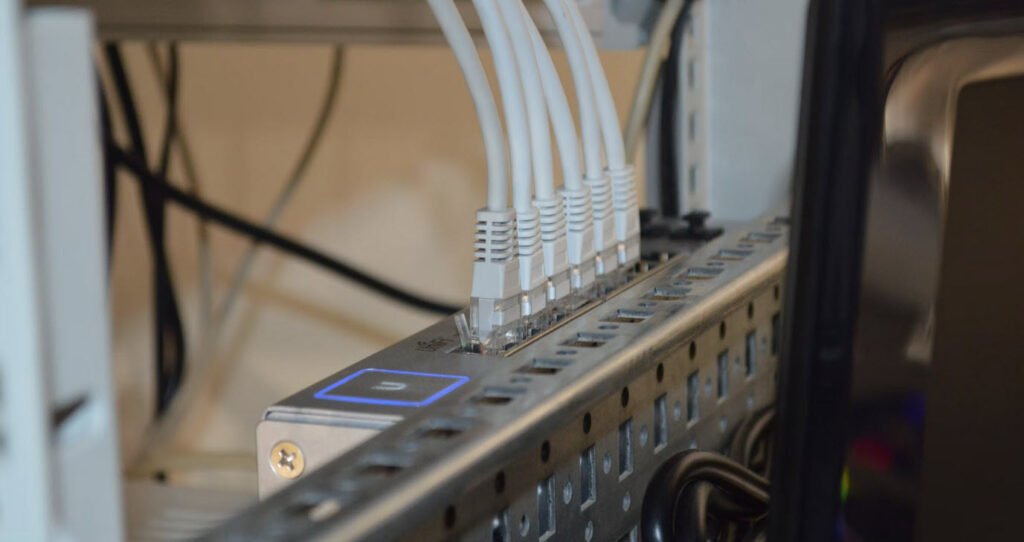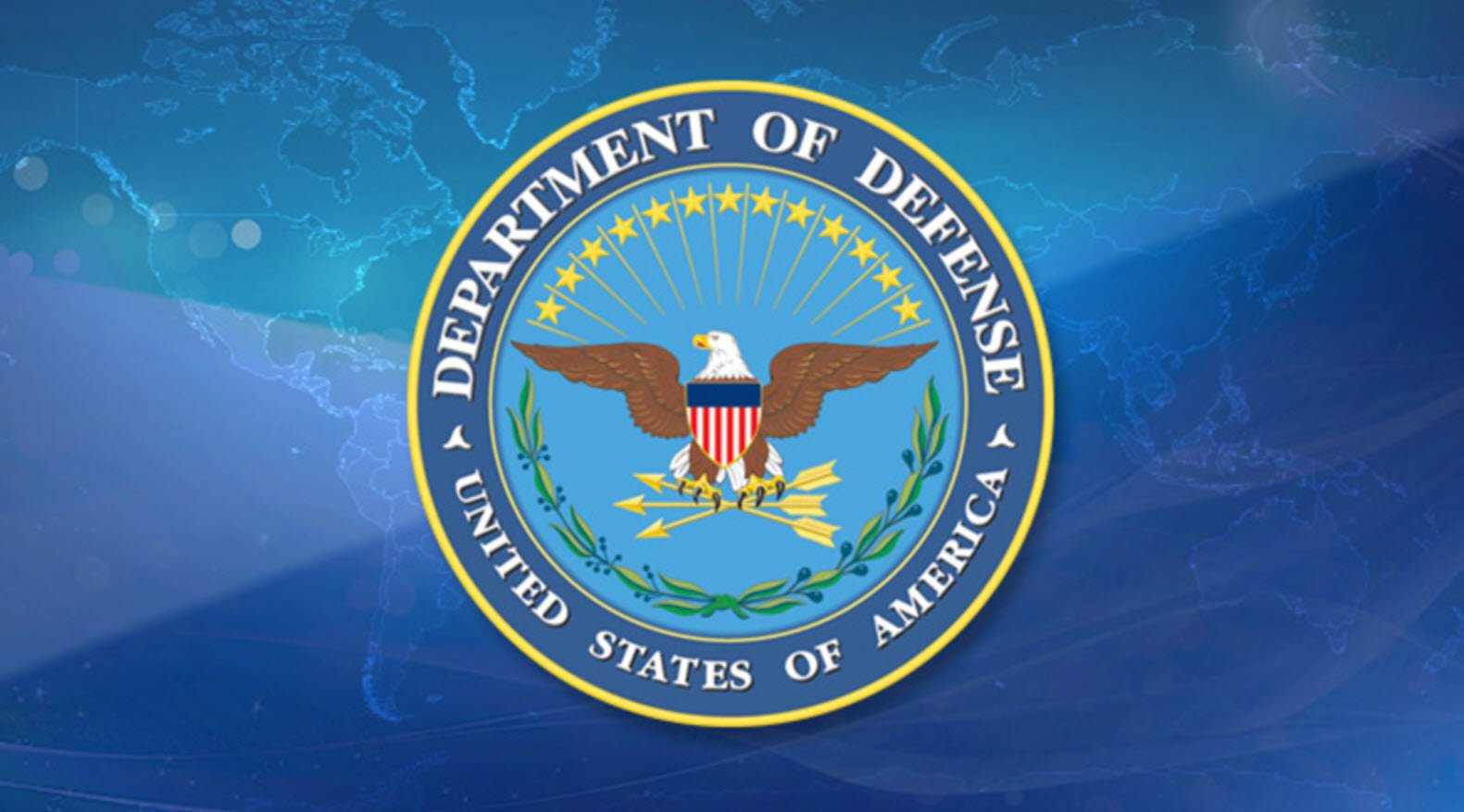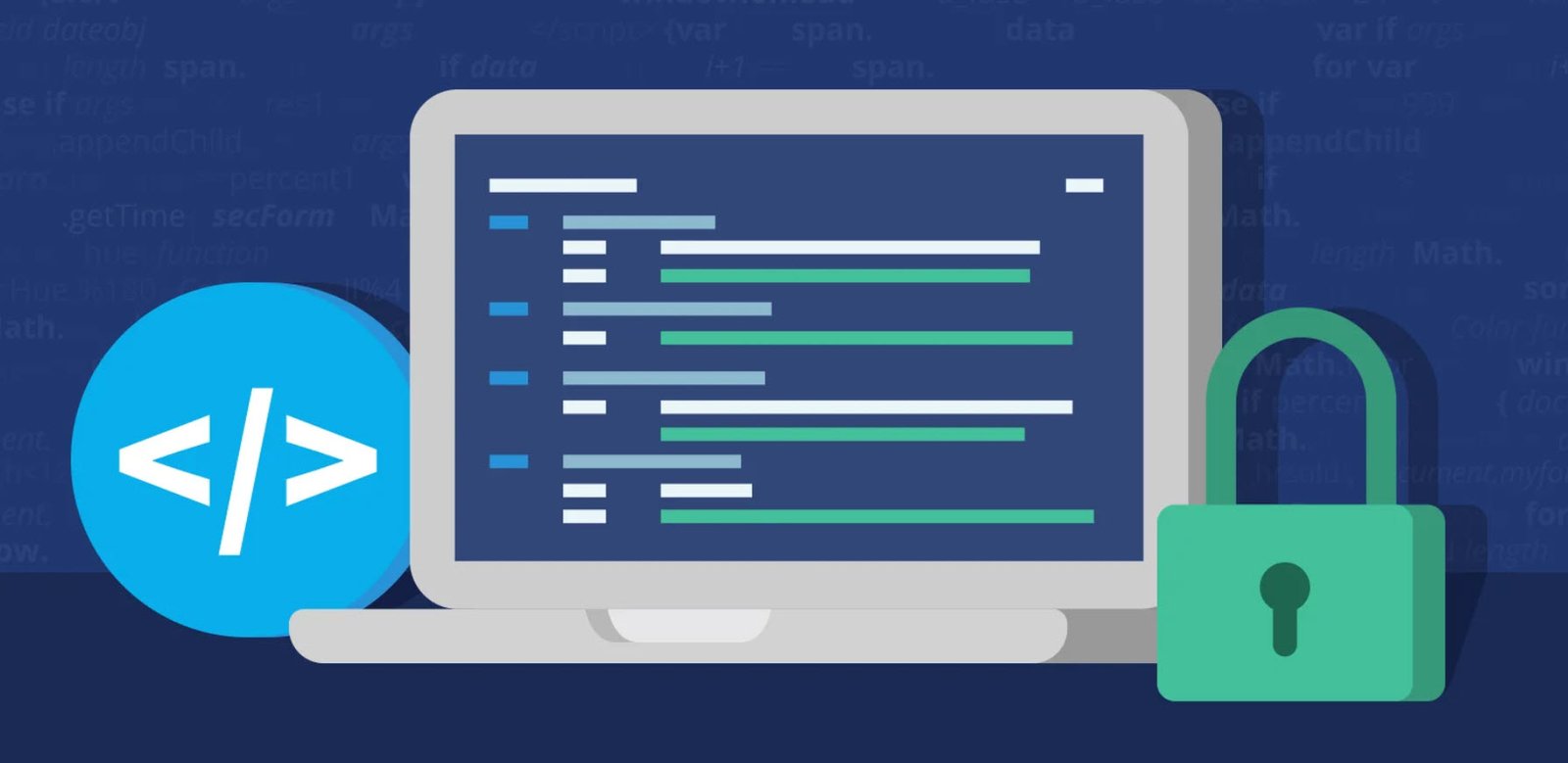
The Internet is a global network of interconnected network, enabling users to share information along multiple channels. A computer that connects to the Internet can access information from a vast array of available servers and other computes by moving information from them to the computer’s local memory.
- A majority of widely accessible information on the Internet consists of inter-linked hypertext documents and other resources of the World Wide Web (W W W).
- Computer users typically manage sent and received information with web browsers; other software for users’ interface with computer networks includes specialized programs for electronic mail; online chat, file transfer and file sharing.
- The movement of information in the Internet is achieved via a system of interconnected computer networks that share data by packet switching using the standardized Internet Protocol Suite (TCP/IP).
- It is a “network of networks” that consists of millions of private and public, academic, business, and government networks of local to global scope that are linked by copper wires, fiber-optic cables, wireless connections, and other technologies.
Also Read: Important Terminologies and Facts Related to Computer and Internet
Internet
The Internet (also known simply as the NET) is the worldwide; publicly accessible system of interconnected computer networks that transmit data by packet switching using the standard Internet protocol (IP).
- It is really a way for computers to communicates and share information’s.
- It is a worldwide collection of networks.
- It behaves like one is a lot of important ways.
- It is a fast developing net and is of outmost importance for, public sector undertaking, educational,
institutions, research organizations etc.
Services of Internet
1. E-mail
- The internet enables user to exchange data/information and communicate via electronic media.
- E-mail messages are usually encoded in American Standard Code for Information Interchange (ASCII) text.
- A popular protocol for sending e-mail is Simple Mail Transfer Protocol (SMTP) and for receiving it is PQP3.
2. Chat
- Chat is the exchange of typed message by netizens.
- It enables netizens to ‘talk not vocal’ by typing and sending the messages back and forth.
- It has two modes- computer to telephone and computer to computer.
- Internet Relay Chat (IRC) developed by Jarkko Oikarinen in 1998, Video Conferencing
- A service that allows a group of users to exchange video information over the internet.
- It includes an audio teleconference facility.
- Each participant’s computer must have a camera, microphone and earphones or speaker.
3. TCP/IP (Transmissions Control Protocol/Internet Protocol)
- This account is very useful in the sense that the members can have unlimited access.
- For membership of this account, UNIX operating system is needed which is loaded with TCP/IP software.
- In this account graphs, figures, games, movies are available.
4. PPP (Point to Point Protocol)
- Point to Point Protocol is a dial account which puts your computer directly on the internet.
- The computer will have its own host name and IP address.
- A modem is required for such connection which transmit the data 9600 bits per second.
5. W W W (World Wide Web)
- W W W described as Wide Area Hypermedia Information initiative which aims to provide universal access to a large universe of documents.
- Mosaic programs is used to search the web.
- The operations of the web makes use of hypertext.
- W W W provides an integrated view of the internet used by clients, and servers.
6. CNEB
- CNEB is one of the services communicated via the Internet.
- CNEB is a collection of inter connected documents and other resources, linked by hyperlinks and URLs.
7. Gopher
- All the available resources on the internet are shown by the Gopher in the form of menus.
- The concept of Gopher is based on the clients and servers.
8. WAIS
- WAIS is known as Wide Area Information Server.
- It maintains separate index for the contents of some selected documents.
- By pressing the name, WAIS, provides a list of documents available in that index with similar keywords.
9. Mosaic
- Mosaic is a program to cruise the internet.
- It can eliminate the needs of separate internet programs.
- It makes the Internet available for everyone.
10. Archie
- Arch is a program which helps in looking for information on the internet.
- It searches its database and informs about the file.
- It can be termed as global librarian which automatic any reaches to whole of the internet services
11. Hypertext
- Hypertext is like a simple or regular text which can be written, edited and modified.
- Hypermedia is an advanced version of hypertext.
- It contains several links to text, sounds images etc.
12. Wireless LAN
A wireless LAN or WLAN is a wireless local area network that uses radio waves at carrier- the last link with the users is wireless, to give a network connection to all users in the surrounding area. Areas may range from a single room to an entire office. The back bone network usually uses cables, with one or more wireless access points connecting the wireless users to the wired network.
Wireless LAN uses radio frequencies for communication between computer devices.
- Access Point (AP) – Access points are two-way transceivers that broadcast data into surrounding environment. Access points act as a mediator between wired and wireless network.
- Health Concerns – Because wireless LAN uses microwaves similar to those in mobile phones, any health concerns would be similar. However, the transmission power of typical wireless access point is less than 100 mW. In comparison, the radio waves emitted by a GSM handset, for example, can have a power of up 2 watts, and it is typically used at a much shorter distance from the body.
- Security – At a wired network, one can often, to some degree, restrict the access to the network by physical means. The geographical range of a wireless network will more often than net be significantly greater than the office or home it’s meant to cover; any neighbour or arbitrary trespasser may be able to shift on all the traffic and gain unauthorized access to internal network resources as well as to the Internet, possibly sending spam or doing illegal actions using the owner’s IP address;If the security is not taken seriously.
13. Internet Protocol Suite
The Internet protocol suite is the set of communications protocols that implement the protocol stock on which the Internet and most commercial networks run. It is also called the TCP/IP protocol suite, after the most important protocols in it – the Transmission Control Protocol (TCP) and the Internet Protocol (IP) which were also the first two defined. TCP/IP is also the de facto standard for transmitting data our networks.
14. File Transfer Protocol
FTP or File Transfer Protocol is a commonly used protocol for exchanging files over any network that supports the TCP/IP protocol (such as the Internet or an internet) There are two computers involved in FTP transfer-a server and a client.
Any software company or individual programmer is able to create FTP server or client software because the protocol is an open standard.
15. Internet Service Provider
An Internet Service Provider (ISP) is a business or organization that offers users access to the Internet and related services. Many but not all ISPs are telephone companies. They provide services such as Internet transit, domain name registration and hosting, dial-up or DSL access, leased line access and collection.
16. Network Service Provider
A Network Service Provider (NSP) is a business or organizations that sells bandwidth or network access by providing direct backbone access to the Internet and usually access to its Network Access Points (NAPs). For such a reason, network service provides are sometimes referred to as backbone providers or internet providers. Network Service Providers may consist of Tele-communications companies, data carriers, wireless communications providers, Internet Service Providers and cable television operators offering high-speed Internet access.
17. Web Server
A web server is a program that, using the client/server model and the World Wide Web’s Hyper Text Transfer Protocol (HTTP) Serves the files that form Web Pages users (whose computers contains HTTP clients that forward their request). Every computer on the Internet that contains a Website must have a Web Server Program. Two leading Web servers are Apache, the most widely installed web server, and.,Microsoft’s Internet Information Server (IIS). Other Web Servers include. Novell’s web server for users of its Netware operating system and IBM’s family of Lotus Domino servers.
18. Client Server
Client Server is a network architecture which separates the client from the server. Each instance of the client software can send request to a server or application server.For example, if you are surfing the internet, your computer and web browser would be considered a client, and the computers, databases, and applications that hold that web site would be considered the server.
19. Proxy Server
A Proxy Server is a computer that offers a computer network service to allow clients to make indirect network connections to other network services. A client connects to the proxy server; then requests a connections, file, or other resource available on different server. The proxy provides the resource either by connecting to the specified server. A proxy server can also serve as a firewall.
20. Internet Connection Sharing
Internet Connection Sharing (ICS) is a feature in newer versions of Windows Operating System for sharing a
single Internet connection on one computer between other computers on the same local area network. On connection, the ‘shared’ connection, is set to use ICS in a property dialog, specified along with another
connection that other computers use in order to make use of the shared connection.
21. Website
A website is a collection of web pages, typically common to a particular domain name or sub-domain on the World Wide Web on the Internet.
- Static Website – A static website, is one that has content that is not expected to change frequently and is manually maintained by some persons or persons using some type of editing software.
- Dynamic website – A dynamic website is one that may have frequently changing information. When the web server receives a request for a given page, the page is automatically generated by the software in direct response to the page request.
22. Web Page
A web Page is a resource on the World Wide Web, usually in HTML/XHTML format with hypertext links to enable navigation from one page or section to another. Varying filename extensions can be used, such as html, html or php to name a few. Web pages often use graphic files to provide illustration. A web page is displayed using a web browser, like Internet Explorer, Mozilla Firefox or Opera.
A web page can contain content which is able to be seen or heard by the end user. These elements include, but are not limited to –
- Text
- Graphics, typically GIF, JPEG or PNG formats
- Audio, typically MIDI or WAV formats Macromedia Flash
- Hyperlinks
23. Dynamic Web Page Dynamic Web Pages can be defined as-
- Web Pages containing dynamic content (example-images, text, form fields etc) that can change/move without the web page being reloaded.
- Web pages that are produced on the fly server side programs, frequently based on parameters in the URL or from an HTML form.
The word dynamic is used in opposite to static.
24. Uniform Resource Locator
A Uniform Resource Locator (URL) is another name for web address, or website address. It is basically a string of characters which refers to resources on the internet For example; the URL of “Google “search engine is “WWW.Google com.”, Tim Benners-Lee created the first URL in 1991 to allow the publishing of hyperlinks on the World Wide Web, a fundamental innovation in the history of the Internet.
25. Android (Operating System)
Android is a mobile operating system initially developed by Android Inc. Android was purchased by Google in 2005. Android is based upon a modified version of the Linux Kernel. Android has a large community of developers writing application programs (apps) that extend the functionality of the devices. There are currently over 1,00,000 apps available for Android.
An unveiling of the Android distribution on 5 November 2007 was announced with the founding of the open Handset Alliance, a consortium of 79 hardware, software and telecom companies devoted to advancing open standards for mobile devices.
26. Wireless Application Protocol (WAP)
Wireless Application Protocol (WAP) is an open international standard. A Wap browser is a commonly used Web browser for small mobile devices such as cell phones.
Before the introduction of WAR service providers had extremely limited opportunities to offer interactive data services, but needed interactivity to support now commonplace activities such as:
- Music downloads Web Addresses
- A web address start with the name of a protocol, which is called a HTTP (Hypertext Transfer Protocol)
- HTTP means that the resource in question will be found on a web server.
- Tracking of stock-market prices
- Sports results
- E-mail by mobile phone
- News headlines new
- Gmail and Facebook Users Advised to Secure Their Accounts Immediately
- Pentagon’s Proactive Approach to Cybersecurity – Over 50,000 Vulnerability Reports Since 2016
- Windows Hardening – Key Points To Remember
- Top 10 Fundamental Questions for Network Security
- How to Remove x-powered-by in Apache/PHP for Enhanced Security
- 12 Point Checklist – PHP Security Best Practices
- Secure Programming Checklist – 2023 Compilation Guide
- The Ultimate Network Security Checklist – 2023 Complete Guide
- A Comprehensive Guide to Crafting Strong Passwords
- Top 28 Essential Tips To Safeguard Your Computer








